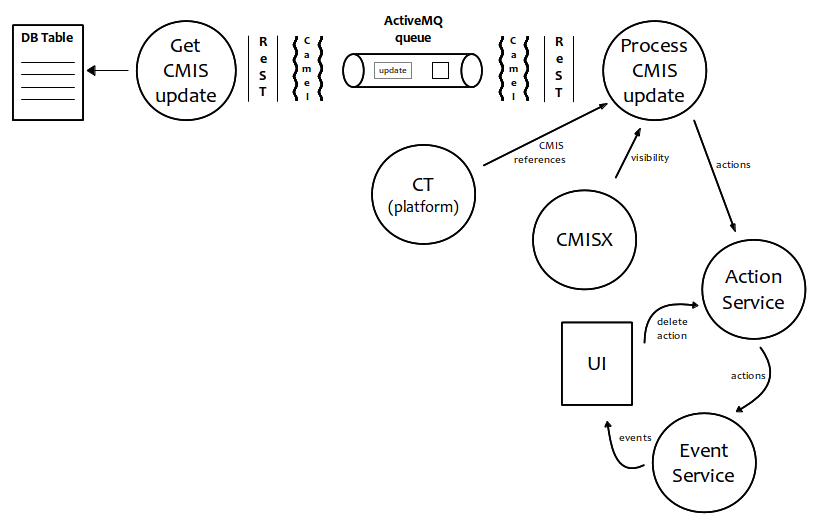 |
Apache Camel Notes
Russell Bateman |
http://java.dzone.com/articles/open-source-integration-apache
The flow is that there is a CMIS update in a table, maintained by CMIS that, via a Camel ReST interface, goes into a queue from which CMISX pulls the update and processes it, performing it in CMISX and in CT as appropriate.

I'm looking at Apache Camel. I think Jack has experience with Camel, so I'm at a disadvantage.
Apache Camel
Camel is, or is based on, Enterprise Integration Patterns (EIPs). These are designs for how one should best design a large component-based system whether the components will run in the same process on a single host or multiple processes across many hosts. Current thinking proposes such systems to be based on messaging, to be message-oriented. All inputs and output are purely messages.
Camel offers:
- interfaces for the patterns (EIPs)
- base objects
- common implementations
- debugging tools
- configuration
- other stuff
Put one way, Apache Camel is a production-ready framework for implementing a solution using Enterprise Integration Patterns.
Camel is basically messaging-technology glue with a routing capability. It joins together messaging start and end points (see illustration above) to enable the transfer of messages from one source, like JMS, HTTP, FTP JSON to a different source like JMS or JSON. For example:
- JMS → JSON
- HTTP → JMS
- FTP → JMS
- JSON → JMS
There are two tutorials I'd like to look at and perhap do. The first is to learn, the second is for relevance to what we'd use it for:
Camel can be deployed as a stand-alone application in its own web container.